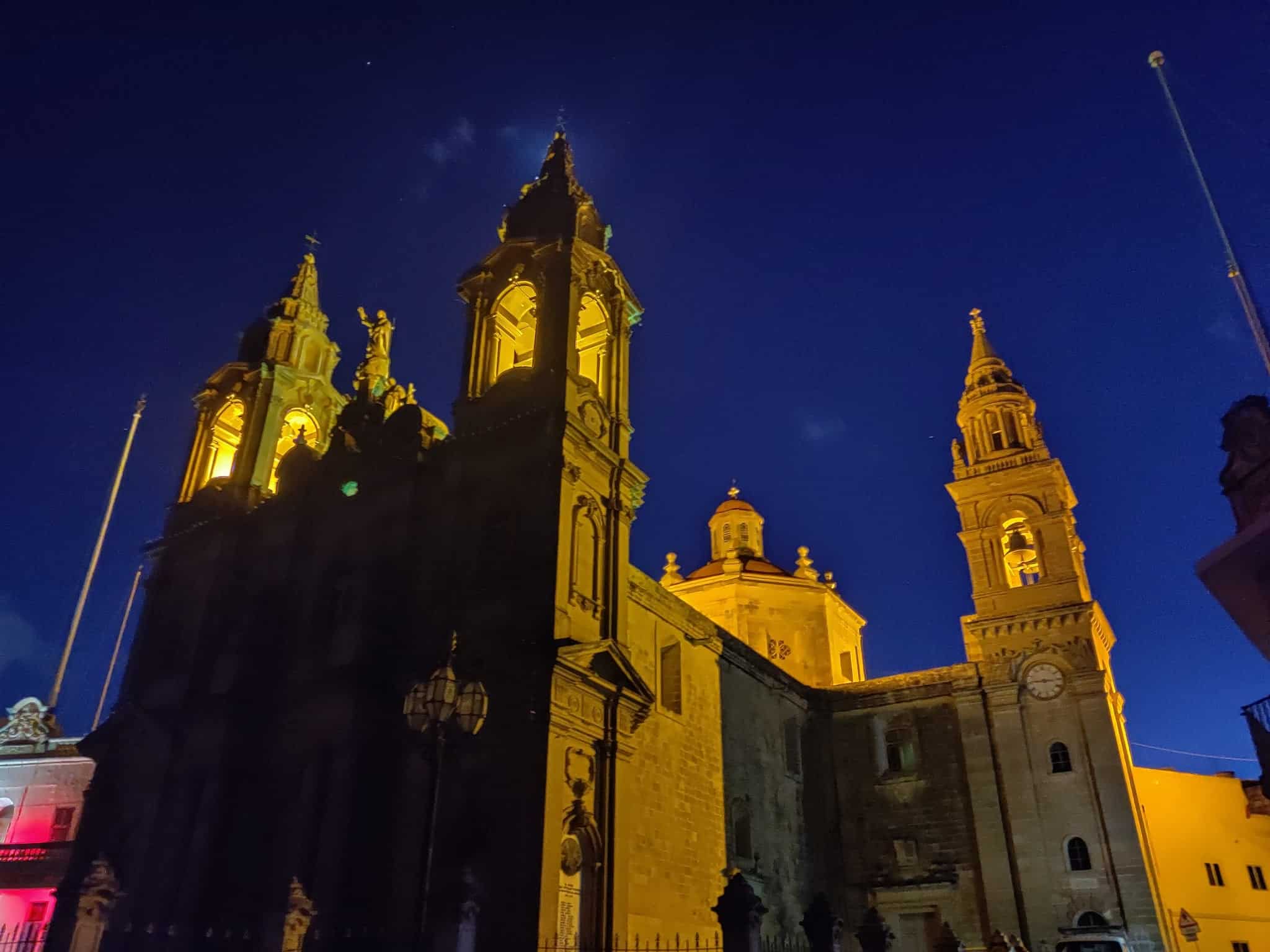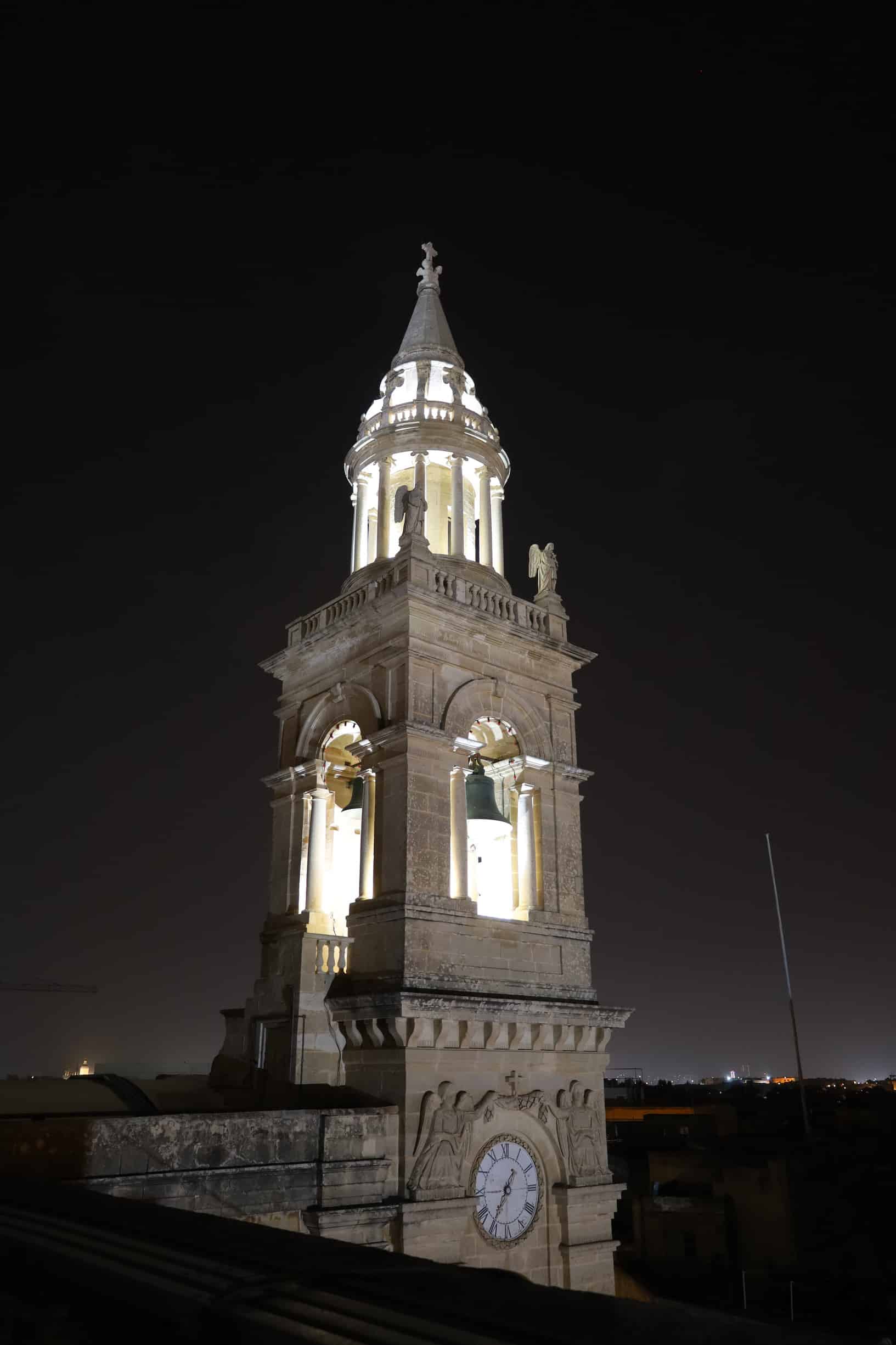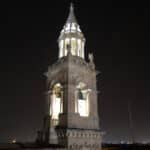PARISH CHURCH OF THE ASSUMPTION OF THE VIRGIN MARY, GUDJA
The design of the Church of the Assumption is attributed to the Maltese architect, Tommaso Dingli (1591-1666). Construction started in 1656 and was completed in ten years. The baroque church bears many similarities to other churches designed by Dingli, particularly in the simplicity of its side walls and the structure of the dome.
HISTORICAL DETAIL:
In 1858, Dingli’s bell-tower sited next to the north transept, was replaced by a new one of over 30 metres height. It was designed in the Neo-Classical style by the British architect William Baker. The tower is surmounted by a temple-like colonnaded structure, topped by a stone cross held by two angels. Two full-length angels also embellish the balustraded wall on the top-most perimeter of the tower. The four bells were cast by the London firm, John Warner and Sons. The clock on the bell-tower was built by the Maltese clock-maker Mikiel Anġ Sapiano (1826-1912).
The façade of the church is an early-twentieth century replacement of the original façade built in the mid-seventeenth century. The new façade, built in 1901, was designed by Carlo Farrugia and built by Angelo Dalli. The central section of the façade is embellished with two allegorical figures, representing the virtues of Hope (left) and Charity (right). The façade is capped by a pediment above which is a sculpted figure of The Risen Christ.
Uniquely to Maltese churches, the church has three bell-towers. Its parvis (zuntier) spans the front and sides of the church, having been enlarged in 1908 to accommodate the new church façade. The parvis is defined by a low perimeter wall with a wrought-iron fence and three gates, held together by limestone pillars sculpted in the eclectic style of the early twentieth century.
The dome is built over an octagonal drum, with windows in its side-walls, and is comparable to other domes designed by Tommaso Dingli, such as that in the parish church of Ħ’Attard.
The church was consecrated in 1785 by the Bishop of Malta, Vincenzo Labini.
HIGHLIGHTs:
The vaulted ceiling of the church is decorated in traditional Marian colours, comprising a light blue background dotted with gold stars. The four corners of the transepts crossing are embellished with full-length paintings of the Four Evangelists, executed in 1934 by Ramiro Raffaele Calì (1881-1945), who signed his work with ‘R.R. Calì’.
The vault arches were carved with grapevine and floral motifs as well as cherubs, executed by Benjamin Tonna (1879-1959). Other parts of the church walls are also adorned with fine and intricate carvings in globigerina limestone, and can be seen mainly around the various side-altar paintings.
TITULAR PAINTING:
The full-length figure of the Virgin Mary is the principal element in the titular painting of The Assumption, executed in 1877 by Pietro Gagliardi (1809-1890) in the Romantic idiom. The Virgin Mary is portrayed with Archangel Michael on the left and Archangel Gabriel on the right. The latter figure holds a lily, the symbol of virginity, recalling his role as the divine messenger in the Annunciation. Their wings indicate the transportation of Our Lady to heaven, here represented as a ring of divine light surrounded by cherubs. Below are several putti, carrying flowers in celebration of the divine event, while two angels play stringed instruments. The Apostles who witnessed this event are given a nominal presence in the lowermost register and are depicted at the moment that they discover her empty tomb.
At either side of the titular painting are two older paintings dating to the eighteenth century. On one side is the Mystic Marriage of St Catherine, while the other is The Virgin Mary with St Anne. The latter painting, considered to be the better of the two, is attributed to the Maltese artist Francesco Zahra (1710-1773).
PROJECT INFORMATION:
The European Union co-funded project aimed at enhancing the church's electrical infrastructure and lighting systems throughout both the façade and its interior spaces. The initiative implemented safety-compliant electrical distribution networks to protect the historic structure, its valuable treasures, and visitors. The improvements included redesigning the illumination to aesthetically highlight the church's collection and architectural features both inside and out. By installing energy-efficient lighting solutions, the project ensures visitors can better appreciate the site's artistic and architectural significance. These enhancements contribute to the preservation and continued enjoyment of this historic landmark at the centre of community life.
VISITORS OPENING HOURS:
Refer to parrocci.knisja.mt/parrocca for full details.
HOW TO ARRIVE:
Refer to Malta Public Transport website: www.publictransport.com.mt








